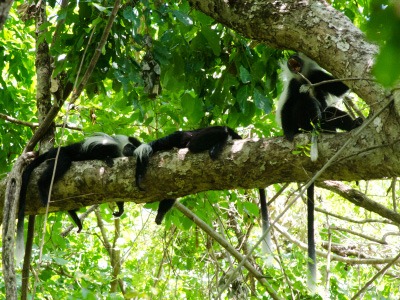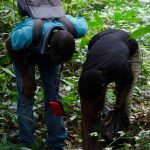Topical Tales From Tropical Tanzania

We’re having a slight change of scene this week, as we leave a grey and slightly chilly Yorkshire behind for the sun of East Africa! Flamingo Land runs a conservation project in Tanzania, the Udzungwa Forest Project, and I’ve just returned from a visit there with Flamingo Land’s Director of Conservation, Andy Marshall. Over the next few weeks I’ll be writing about some of the work that we carry out to protect forests and help local people.
The aim of the Udzungwa Forest Project, or UFP, is to better protect tropical forests through ecological monitoring, community education, capacity building and lobbying. At the moment, UFP is working in and around Magombera Forest, which is located on the east side of the breathtaking Udzungwa Mountains. Unfortunately, lowland tropical forest like Magombera is one of the most threatened habitats in the world, and indeed the remaining forest only covers around 10 square kilometres! It faces a number of threats, the most major of which is logging for firewood and building materials. The cleared land is usually then used for agriculture. As the villages surrounding Magombera depend on these for their livelihoods, it wouldn’t be fair to simply ban them from using the forest’s resources. Instead, the project teaches villagers about the value of the forest, and helps them to explore alternative sources of income.
You may be wondering why it is important to leave forests as they are, but in fact there are a number of very good reasons! They return water to the atmosphere through their leaves, making sure that it rains enough for crops to grow. Their roots also anchor the soil, preventing it from blowing away in the wind or washing away during the rainy reason. Tropical forests are of particular importance due to the number of unique species they contain, and Magombera is no exception. Over 40% of the trees found there are either considered threatened or endangered, or can only be found in that area of East Africa. These are known as endemic species, and it’s not just a problem for plants – the Udzungwa red colobus monkey, for example, can only be found around the Udzungwa Mountains, and so losing their habitat would be catastrophic! There’s also the Magombera chameleon, which scientists working in the forest haven’t been able to find since 2005, so we are particularly worried about its future. On a positive note, there’s a lot of work being carried out to protect these threatened habitats, and I’ll go over some of those next week!
Michael Darling, Education Marketing Officer


